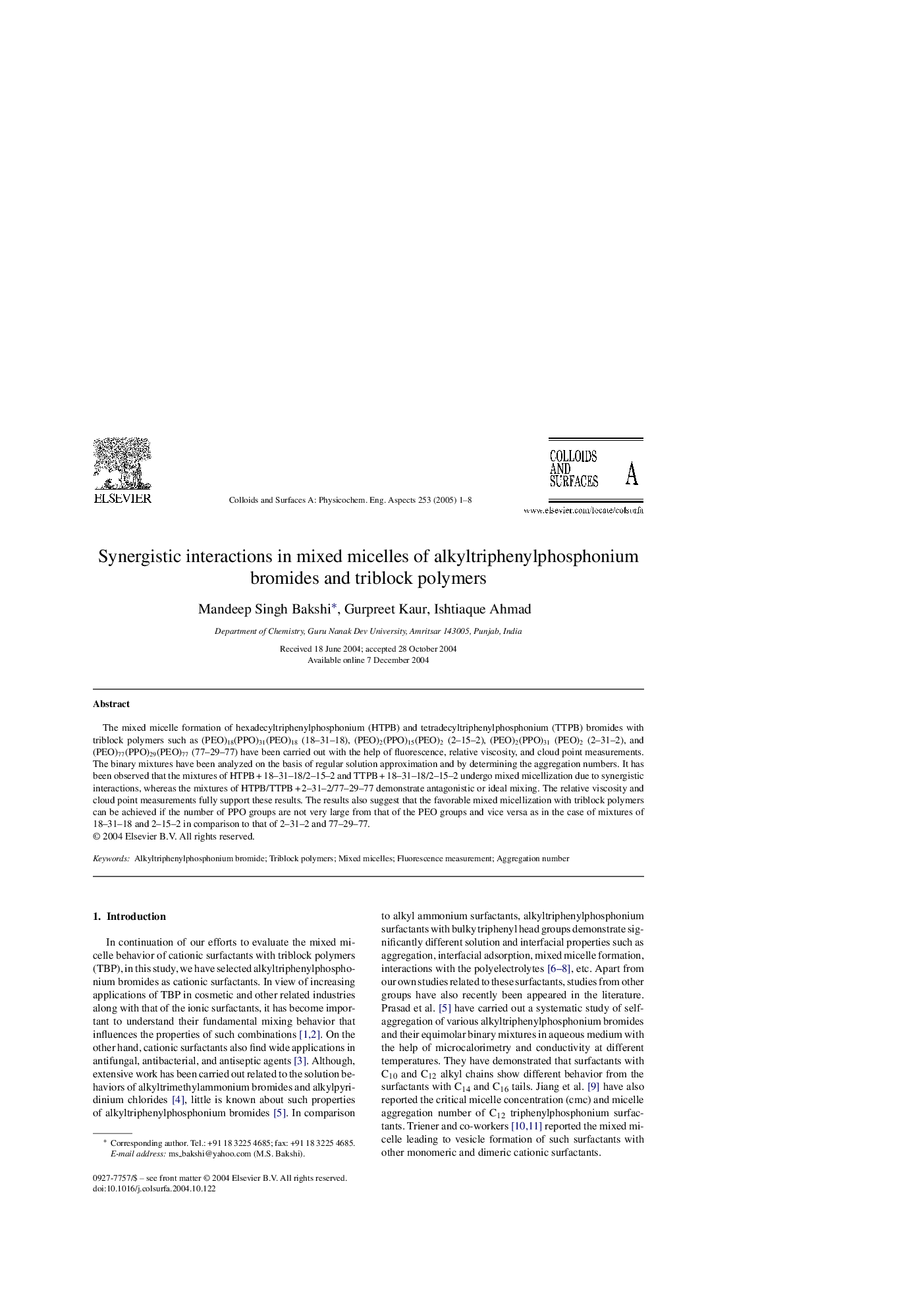| Article ID | Journal | Published Year | Pages | File Type |
|---|---|---|---|---|
| 9676114 | Colloids and Surfaces A: Physicochemical and Engineering Aspects | 2005 | 8 Pages |
Abstract
The mixed micelle formation of hexadecyltriphenylphosphonium (HTPB) and tetradecyltriphenylphosphonium (TTPB) bromides with triblock polymers such as (PEO)18(PPO)31(PEO)18 (18-31-18), (PEO)2(PPO)15(PEO)2 (2-15-2), (PEO)2(PPO)31 (PEO)2 (2-31-2), and (PEO)77(PPO)29(PEO)77 (77-29-77) have been carried out with the help of fluorescence, relative viscosity, and cloud point measurements. The binary mixtures have been analyzed on the basis of regular solution approximation and by determining the aggregation numbers. It has been observed that the mixtures of HTPBÂ +Â 18-31-18/2-15-2 and TTPBÂ +Â 18-31-18/2-15-2 undergo mixed micellization due to synergistic interactions, whereas the mixtures of HTPB/TTPBÂ +Â 2-31-2/77-29-77 demonstrate antagonistic or ideal mixing. The relative viscosity and cloud point measurements fully support these results. The results also suggest that the favorable mixed micellization with triblock polymers can be achieved if the number of PPO groups are not very large from that of the PEO groups and vice versa as in the case of mixtures of 18-31-18 and 2-15-2 in comparison to that of 2-31-2 and 77-29-77.
Related Topics
Physical Sciences and Engineering
Chemical Engineering
Colloid and Surface Chemistry
Authors
Mandeep Singh Bakshi, Gurpreet Kaur, Ishtiaque Ahmad,
